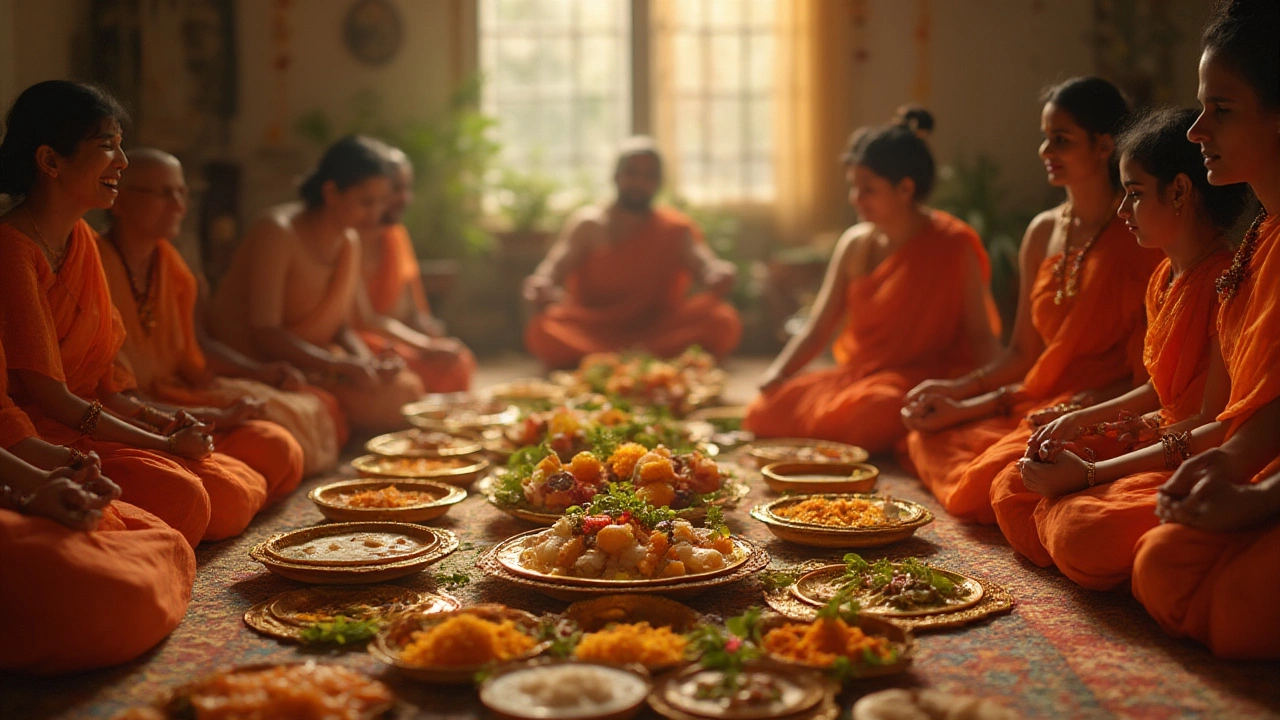Hindu Diet Basics: What to Eat and Why
If you’re curious about the Hindu diet, the first thing to know is that it’s mostly plant‑based. Most Hindus avoid meat, fish, and eggs because of the principle of ahimsa – non‑violence. That doesn’t mean the food is boring. Legumes, rice, wheat, fresh vegetables, fruits, dairy, and a handful of spices make up the everyday plate.
Typical meals start with a grain like rice or roti, add a protein source such as dal (lentils) or paneer (cottage cheese), and finish with a vegetable stir‑fry or curry. Yogurt, ghee, and coconut oil are common fats, and they give flavor without breaking the meat‑free rule. You’ll also see a lot of seasonal fruit served as a dessert or snack.
Fasting and Special Days
Fasting is an important part of many Hindu traditions. On Ekadashi, Navratri, or during personal vows, people might eat only fruits, nuts, or a simple bowl of kheer (sweet rice pudding) made with milk and jaggery. Some fasts allow only root vegetables like potatoes and sweet potatoes. The key is to keep the food light, avoid strong spices, and focus on purity.
If you’re trying a Hindu fast, start with a glass of warm water, then have a small portion of fresh fruit. Follow with boiled potatoes seasoned with a pinch of salt and turmeric. End the meal with a spoonful of plain yogurt. This routine keeps the stomach happy while respecting the fasting rules.
Health Benefits and Practical Tips
Because the diet leans heavily on beans, whole grains, and vegetables, it’s naturally high in fiber, protein, and antioxidants. Studies show that such a diet can help lower cholesterol, control blood sugar, and support a healthy gut. If you’re new to it, try swapping meat with a cup of cooked chickpeas in your favorite curry. Add a dash of cumin and coriander for flavor without extra calories.
When cooking at home, keep a few pantry staples ready: red lentils, split peas, basmati rice, whole‑wheat flour, and spices like mustard seeds, curry leaves, and garam masala. A quick dal recipe needs only lentils, water, turmeric, and a tempering of mustard seeds in ghee. It’s ready in 20 minutes and pairs well with rice or roti.
For snacks, think roasted chickpeas, spiced nuts, or fresh coconut slices. These are satisfying and fit the vegetarian guidelines. If you need dairy, choose low‑fat yogurt or paneer made from skim milk to keep calories in check.
Remember that regional variations exist. South Indian meals often include dosa (fermented rice‑lentil crepes) and sambar (spicy lentil soup), while North Indian plates favor paneer tikka and whole‑wheat paratha. Both styles honor the same core principle: no meat, and respect for life.
Finally, stay flexible. The Hindu diet isn’t a strict rulebook; it’s a lifestyle that can adapt to your health goals, budget, and taste preferences. Start with one vegetarian dinner a week, add a fasting day during a festival, and watch how your energy and digestion improve.
Whether you’re cooking for yourself or sharing a meal with friends, the Hindu diet offers flavorful, wholesome options that honor tradition and support well‑being.
Why Do Hindus Not Eat Pork? Indian Food Beliefs and Traditions Explained
Why don't most Hindus eat pork? Discover the cultural, spiritual, and historical reasons behind this widely observed Hindu food restriction and its impact on Indian cuisine.
